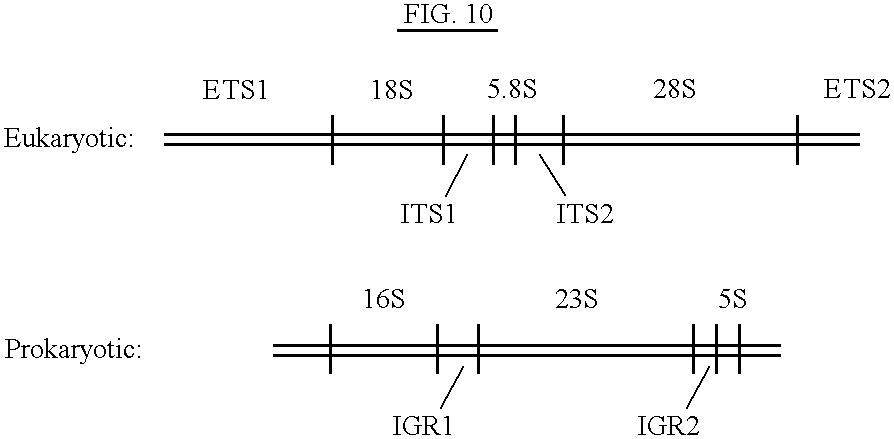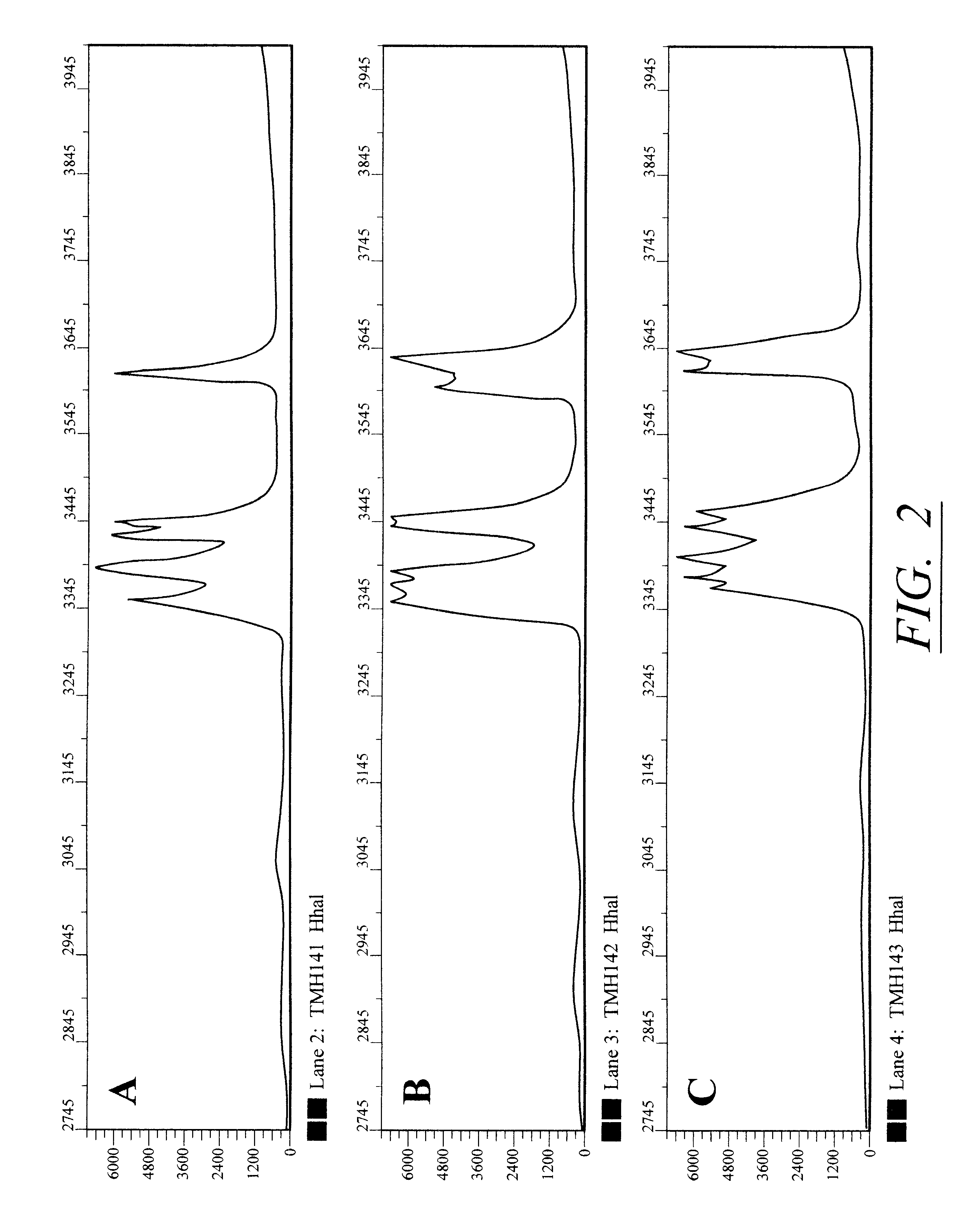Semiautomated method for finger-printing bacterial DNA
a fingerprinting method and bacterial technology, applied in biochemistry apparatus and processes, organic chemistry, sugar derivatives, etc., can solve problems such as difficult to solve problems, serious, sometimes life-threatening infections, and patients in intensive care units, and achieve rapid identification of pathogenic bacteria strains and speed with which results are obtained
- Summary
- Abstract
- Description
- Claims
- Application Information
AI Technical Summary
Benefits of technology
Problems solved by technology
Method used
Image
Examples
example 1
MRSA (methicillin resistant Staphylococcus aureus) isolates are identified at the hospital and delivered on typticase-soy agar slants. The patient name and hospital identification number are recorded and an isolate number is designated. Each number assigned has a three-letter prefix designating the hospital or origin (AMH, Archbold Memorial Hospital; TMH, Tallahassee Memorial Hospital) as well as a sequential numerical designation.
Five colonies from the slant are collected on a 5 millimeter bacterial inoculation loop and resuspended in 50 .mu.l 10 mM EDTA in a microcentrifuge tube. The tube is boiled for 5 minutes and the resultant lysate, containing the DNA template, is used in a polymerase chain reaction (PCR). Although it is preferable to use a 5' end labeled primer from the 16S gene for prokaryotic typing, several alternative options are also available for strain typing. These include: (1) using a 5' end labeled primer from the 23S gene; (2) using both the 5' end labeled 16S and...
example ii
Eukaryotic Fingerprinting in the Ribosomal Gene Clusters
Fingerprint patterns of higher life forms have been created in accordance with Example II from the ribosomal gene clusters using the same priming sites as those used for prokaryotic (bacterial typing protocol. The priming sites for C--C and 7 are believed to be conserved in those organisms whose ribosomal intergene region amplified. These higher life forms included the horse, amphioxus (the first evolutionary organism to develop a notocord), cockroach (insect), sea urchin (echinoderm), salamander (amphibian), Rose Breasted Cockatoo (avian), rabbit (mammal), and human (mammal). As shown in FIG. 4, which is a photograph of an agarose gel, illustrates the PCR amplifications for the organisms used in our study. FIGS. 5-9 depict the waveform patterns for the horses in lanes 4 and 6, cockroach in lane 8, amphioxus in lane 7 and salamander in lane 11 of FIG. 4.
It is also believed that other higher life forms seem to have the primer 7 ...
PUM
| Property | Measurement | Unit |
|---|---|---|
| Time | aaaaa | aaaaa |
| Time | aaaaa | aaaaa |
| Temperature | aaaaa | aaaaa |
Abstract
Description
Claims
Application Information
 Login to View More
Login to View More - R&D
- Intellectual Property
- Life Sciences
- Materials
- Tech Scout
- Unparalleled Data Quality
- Higher Quality Content
- 60% Fewer Hallucinations
Browse by: Latest US Patents, China's latest patents, Technical Efficacy Thesaurus, Application Domain, Technology Topic, Popular Technical Reports.
© 2025 PatSnap. All rights reserved.Legal|Privacy policy|Modern Slavery Act Transparency Statement|Sitemap|About US| Contact US: help@patsnap.com



